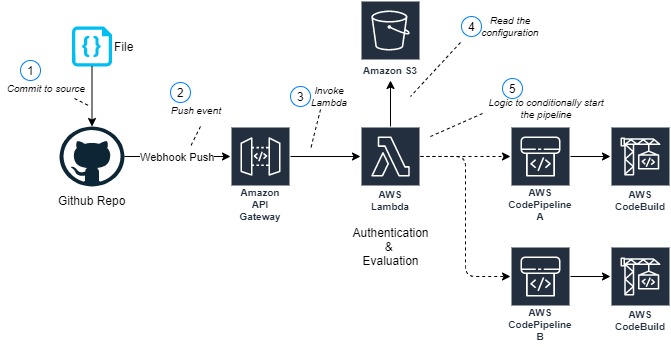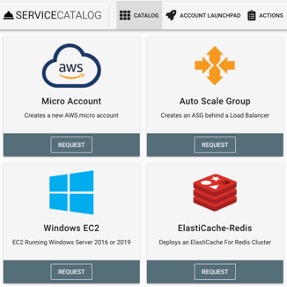AWS DevOps & Developer Productivity Blog
Tag: AWS CodeBuild
Choosing a CI/CD approach: AWS Services with BigHat Biosciences
Founded in 2019, BigHat Biosciences’ mission is to improve human health by reimagining antibody discovery and engineering to create better antibodies faster. Their integrated computational + experimental approach speeds up antibody design and discovery by combining high-speed molecular characterization with machine learning technologies to guide the search for better antibodies. They apply these design capabilities […]
Choosing a Well-Architected CI/CD approach: Open-source software and AWS Services
Take a Well-Architected approach to make an informed decision when choosing to implement CI/CD using open-source tools on AWS services, using managed AWS services, or a combination of both.
We will look at key considerations for evaluating open-source software and AWS Services using the perspectives of a startup company, and a mature company, as examples. These will give you two very different points of view that you can use to compare to your own organization. To make this investigation easier we will use Continuous Integration (CI) and Continuous Delivery (CD) capabilities as the target of our investigation.
In our next two blog posts we will follow two AWS customers Iponweb and BigHat Biosciences as they share their CI/CD journeys, their perspective, the decisions they made, and why.
To end the series, we will explore an example reference architecture showing the benefits AWS provides regardless of your emphasis on open source tools or managed AWS services.
Integrate GitHub monorepo with AWS CodePipeline to run project-specific CI/CD pipelines
Understand how to automate trigger of project specific code pipeline for GitHub mono repos users. Currently, if a customer is using GitHub as a version control system and he has only one repository which contains multiple folders each for a different project, change in any file, triggers the code pipeline for the whole repository rather than for the appropriate project. With this blog, they would be able to automate trigger of appropriate pipeline based on the project folder where the file gets changed.
CDK Corner – April 2021
Social – Community Engagement We’re getting closer and closer to CDK Day, with the event receiving 75 CFP submissions. The cdkday schedule is now available to plan out your conference day. Updates to the CDK Constructs promoted to General Availability Promoting a module to stable/General Availability is always a cause for celebration. Great job to […]
Serverless UI testing using Selenium, AWS Lambda, AWS Fargate, and AWS Developer Tools
Since the post Using AWS CodePipeline, AWS CodeBuild, and AWS Lambda for Serverless Automated UI Testing was published, things have evolved with Chrome headless and Firefox headless being supported natively. AWS Lambda now supports container images, AWS Step Functions has added support for Map state and its integration with Lambda, and AWS Fargate has enabled […]
CI/CD on Amazon EKS using AWS CodeCommit, AWS CodePipeline, AWS CodeBuild, and FluxCD
This post discusses how we can speed up the development of our Kubernetes infrastructure by using a continuous integration (CI) pipeline to build our Docker images and automatically deploy them to our Amazon Elastic Kubernetes Service (Amazon EKS) cluster using FluxCD and the GitOps philosophy as the continuous delivery (CD) element. To do so, we […]
Using AWS DevOps Tools to model and provision AWS Glue workflows
This post provides a step-by-step guide on how to model and provision AWS Glue workflows utilizing a DevOps principle known as infrastructure as code (IaC) that emphasizes the use of templates, source control, and automation. The cloud resources in this solution are defined within AWS CloudFormation templates and provisioned with automation features provided by AWS […]
How FactSet automates thousands of AWS accounts at scale
This post is by FactSet’s Cloud Infrastructure team, Gaurav Jain, Nathan Goodman, Geoff Wang, Daniel Cordes, Sunu Joseph, and AWS Solution Architects Amit Borulkar and Tarik Makota. In their own words, “FactSet creates flexible, open data and software solutions for tens of thousands of investment professionals around the world, which provides instant access to financial […]
Automate thousands of mainframe tests on AWS with the Micro Focus Enterprise Suite
We have seen mainframe customers often encounter scalability constraints, and they can’t support their development and test workforce to the scale required to support business requirements. These constraints can lead to delays, reduce product or feature releases, and make them unable to respond to market requirements. Furthermore, limits in capacity and scale often affect the quality of changes deployed, and are linked to unplanned or unexpected downtime in products or services.
The conventional approach to address these constraints is to scale up, meaning to increase MIPS/MSU capacity of the mainframe hardware available for development and testing. The cost of this approach, however, is excessively high, and to ensure time to market, you may reject this approach at the expense of quality and functionality. If you’re wrestling with these challenges, this post is written specifically for you.









